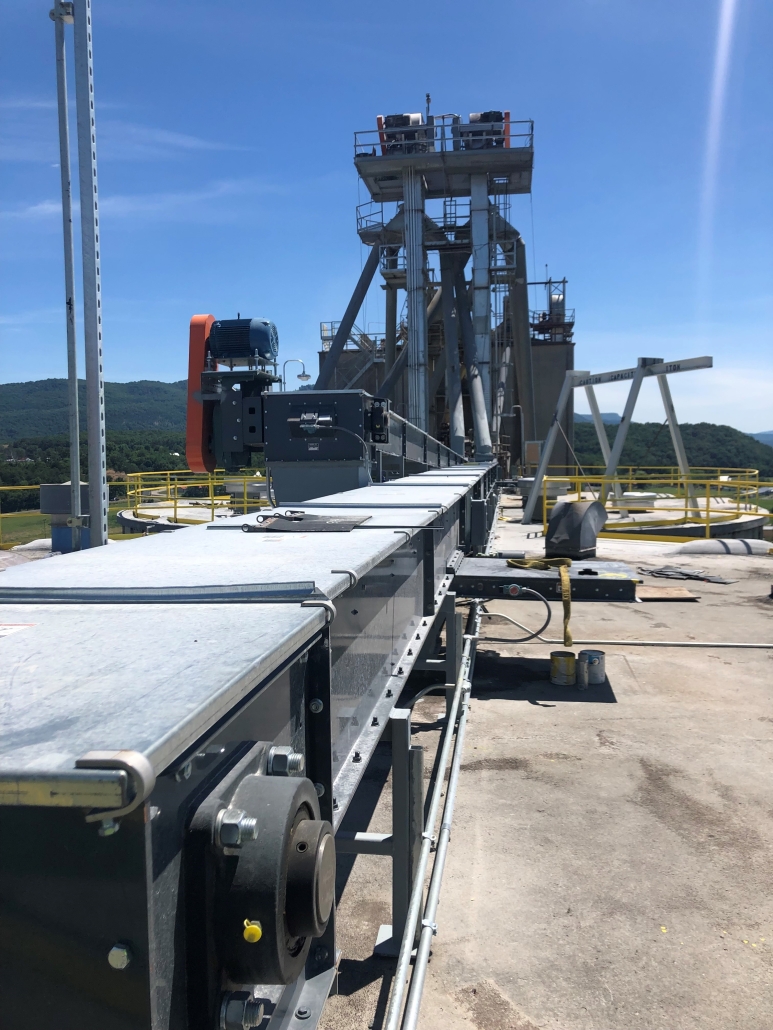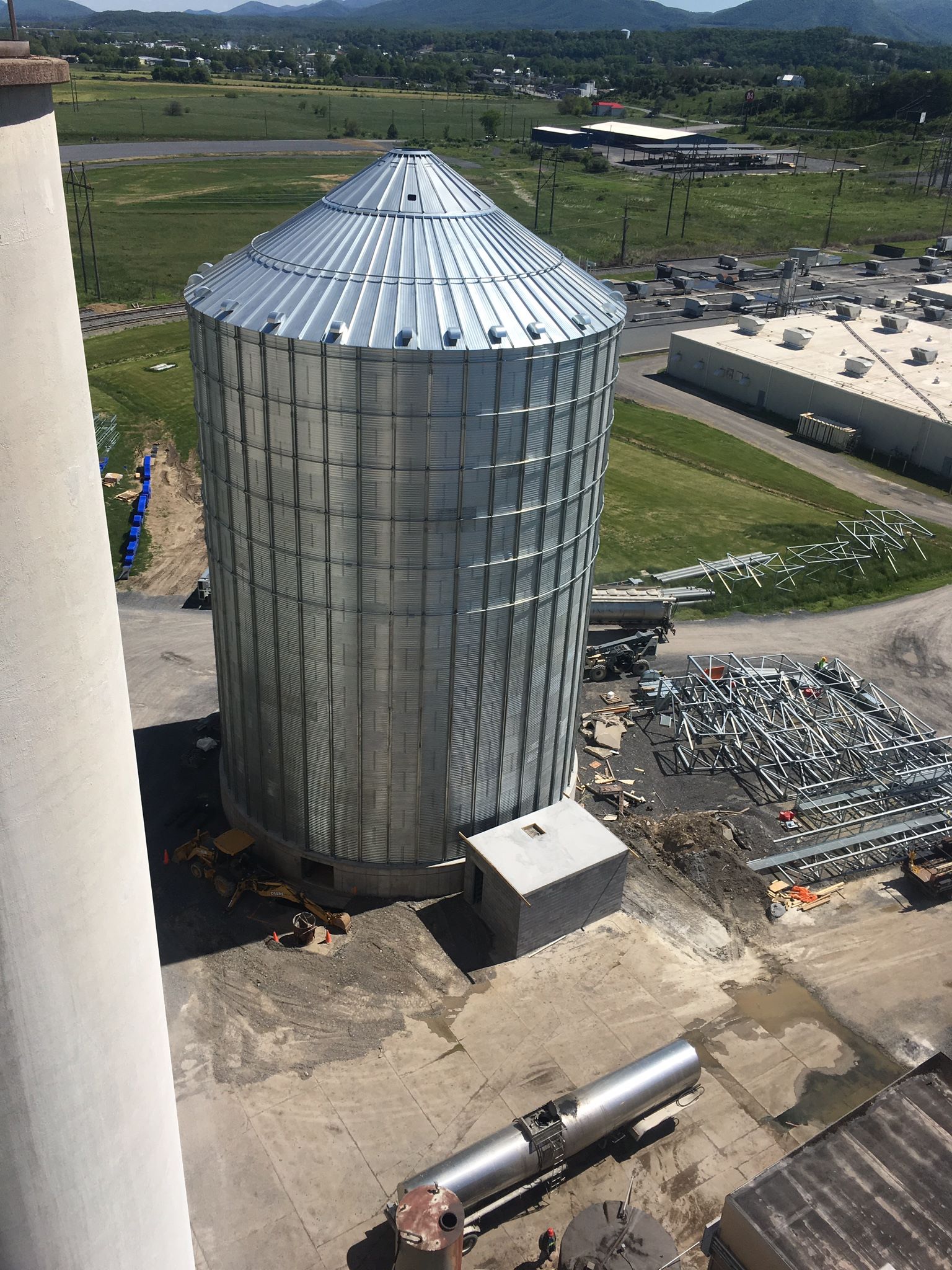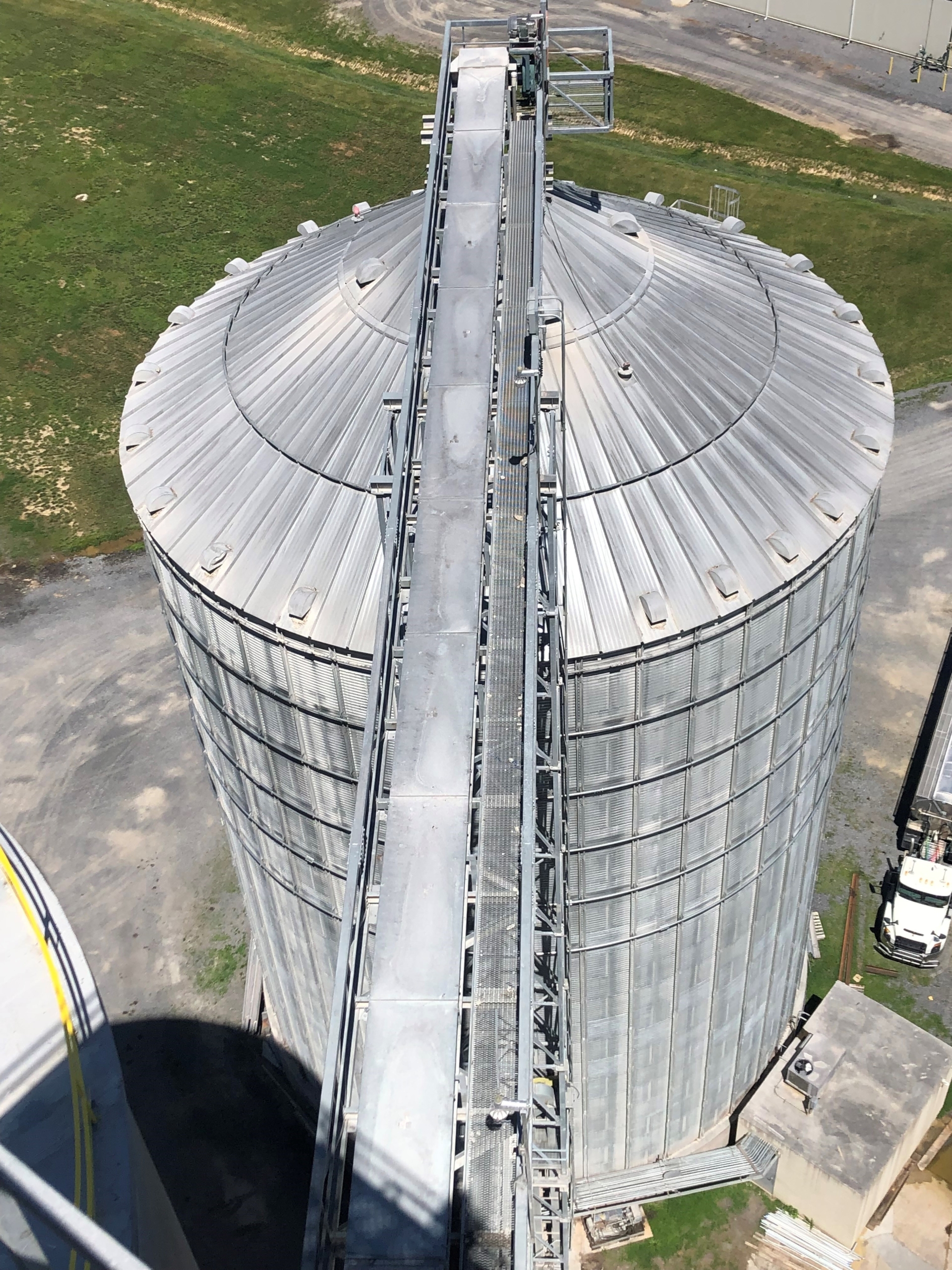Enhancing Grain Storage: Top Bead’s Successful Project at Pilgrim’s Feed Mill
In 2016, Top Bead embarked on a significant project that would leave a lasting impact on Pilgrim’s feed mill in West Virginia. Over time, our team has executed various tasks at this site, including the exchange of pellet mills and coolers, the replacement of a concrete silo roof, coupled with the installation of conveying equipment to streamline operations. For this project, our objective was to bolster their corn storage capabilities, a goal we achieved by introducing a Sioux Steel Bin.
The project began with constructing a concrete foundation, which was subcontracted to be completed. The foundation, a 67-foot diameter structure standing approximately 7 feet tall, is not just a base; it is designed and calculated to ensure it supports the entire bin system. A crucial part of the foundation was the construction of an above-ground access tunnel. Building a tunnel within the foundation of a concrete pad for a grain bin is essential for efficient reclaimed drag access. It allows for a protected, direct route for the reclaimed drag to move grain from the bin to other parts of the facility, optimizing workflow and minimizing delays. Additionally, it enhances safety by allowing maintenance to be accessible and simplifies access for repairs, ensuring smooth and safe operations.
After the foundation’s completion, we focused on installing the hydraulic Laidig sweep, a pivotal component for efficient grain management. The hydraulic Laidig sweep in a grain bin typically features a large, horizontally rotating auger or a series of long, angled paddles mounted on a central shaft. This system extends from a central hub at the bottom of the bin and reaches out to the bin’s perimeter. It is designed to move grain from the bin’s edges to the center and plays a crucial role in ensuring thorough extraction and reducing waste. Its functionality significantly enhances operational efficiency by preventing grain from accumulating in hard-to-reach corners, thereby reducing spoilage and clogging. The sweep’s role in facilitating the even distribution of grain during filling also reduces the need for manual labor, thereby improving overall safety and efficiency.
With the sweep in place, we erected the bin, a process that took one week to complete. This involved the meticulous assembly of 23 rings, with the roof assembled to follow. Overall, the towering structure has a peak height of 104 feet and 1 inch. The finished bin, with a diameter of 66 feet, now boasts an impressive storage capacity of 259,000 bushels of corn. This expansion was a critical upgrade for Pilgrims, enabling them to handle larger quantities of grain with greater ease and efficiency.
The project was not limited to the bin alone. We also installed a 12×20 block building to house the bin’s electrical components. This structure ensures that all electrical systems are safely and efficiently managed. Additionally, we set up a top receiving drag, essential for the initial grain intake. A catwalk with a support tower was added to facilitate easy access and maintenance of the bin, plus we installed two 189-foot-tall elevator legs with turn heads on each.
These two elevator legs can each handle 20,000 bushels, which outdoes the two smaller elevator legs that were attached to the concrete silos next to the new bin addition. The two smaller elevator legs were removed from the existing concrete silos; there was no need to keep them as they could not handle the grain flow fast enough to handle the railcar unloading. Another critical aspect of the two new elevator legs was a newly installed rail pit drag.
In a feed mill, a rail pit is crucial for efficiently handling and processing bulk feed ingredients transported by rail. It is a depression or trough located beneath the rail tracks where railcars can unload their contents. The pit allows for the direct transfer of materials from the railcars into conveyors or storage systems, minimizing manual handling and streamlining the flow of ingredients into the mill. The drag installed in the rail pit is roughly 100 feet long, and it feeds into the two new elevator legs we installed.
One of the key aspects of this project was our ability to manage every detail seamlessly. Top Bead handled all logistics precisely, including using our crane to lift and place materials. We managed subcontractors, coordinated the various aspects of the installation, and designed every component in-house. This comprehensive approach ensured the project was completed on time and to the highest standards.
The successful completion of this project not only expanded Pilgrim’s storage capacity but also demonstrated Top Bead’s unwavering commitment to quality and service. By enhancing the feed mill’s corn storage capabilities, we have significantly contributed to their operational efficiency and long-term success. This project is a testament to our expertise in handling complex installations and our dedication to delivering exceptional results, a commitment we will continue to uphold in all our projects.
We take pride in our role in enhancing Pilgrim’s grain storage capabilities and look forward to continuing to provide top-notch solutions for our clients.



